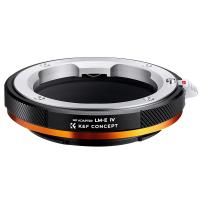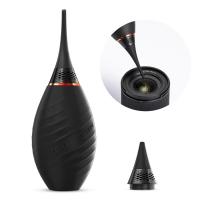What Microscope Has The Highest Resolution ?
The electron microscope has the highest resolution among all types of microscopes.
1、 Electron Microscope: Achieving the highest resolution in microscopy.
The microscope that has the highest resolution is the Electron Microscope. It is widely regarded as the most powerful tool in the field of microscopy, capable of achieving resolutions far beyond what is possible with other types of microscopes.
Electron microscopes use a beam of electrons instead of light to magnify and visualize specimens. This allows them to overcome the limitations of traditional light microscopes, which are limited by the wavelength of visible light. The shorter wavelength of electrons enables electron microscopes to achieve much higher resolution, allowing for the visualization of extremely small structures and details.
There are two main types of electron microscopes: transmission electron microscopes (TEM) and scanning electron microscopes (SEM). TEMs are used to study the internal structure of specimens, while SEMs provide detailed surface imaging.
In recent years, advancements in electron microscopy technology have further pushed the boundaries of resolution. For example, aberration-corrected electron microscopy has significantly improved the resolution by correcting for lens aberrations that limit image quality. This technique has allowed researchers to visualize atomic-scale details and study materials at the nanoscale level.
Furthermore, the development of cryo-electron microscopy (cryo-EM) has revolutionized the field of structural biology. Cryo-EM allows for the imaging of biological samples in their native, frozen state, providing high-resolution structural information of proteins and other biomolecules. This technique has been instrumental in advancing our understanding of complex biological processes and has even led to the development of new drugs.
In conclusion, the Electron Microscope, with its ability to achieve the highest resolution in microscopy, continues to be an indispensable tool in various scientific disciplines. Ongoing advancements in electron microscopy technology promise even greater resolution and imaging capabilities in the future, further expanding the possibilities for scientific discovery.

2、 Scanning Tunneling Microscope: High-resolution imaging at the atomic scale.
The Scanning Tunneling Microscope (STM) is widely regarded as the microscope with the highest resolution, allowing for high-resolution imaging at the atomic scale. Developed in the early 1980s by Gerd Binnig and Heinrich Rohrer, the STM revolutionized the field of microscopy by enabling scientists to visualize individual atoms and manipulate them with remarkable precision.
The STM operates on the principle of quantum tunneling, where a sharp probe is brought extremely close to the surface of a sample. A small bias voltage is applied between the probe and the sample, causing electrons to tunnel between them. By measuring the tunneling current, a three-dimensional image of the sample's surface can be generated with atomic resolution.
The resolution of the STM is unparalleled, with the ability to resolve individual atoms and even the atomic structure of molecules. This level of detail has allowed scientists to study the properties and behavior of materials at the atomic scale, leading to numerous breakthroughs in fields such as nanotechnology, surface science, and condensed matter physics.
In recent years, advancements in STM technology have further enhanced its capabilities. For example, the introduction of non-contact STM techniques has minimized the interaction between the probe and the sample, reducing the risk of damaging delicate samples. Additionally, the development of low-temperature STM has enabled imaging and manipulation of materials at extremely low temperatures, revealing new insights into quantum phenomena.
While other microscopy techniques, such as electron microscopy, have also made significant strides in resolution, the STM remains unrivaled in its ability to directly visualize and manipulate individual atoms. Its unique capabilities continue to push the boundaries of scientific understanding and pave the way for new discoveries in the nanoscale world.

3、 Atomic Force Microscope: Nanoscale resolution for surface topography and forces.
The microscope with the highest resolution is the Atomic Force Microscope (AFM). It is a powerful tool used for imaging and manipulating matter at the nanoscale level. The AFM provides detailed information about the surface topography and forces of a sample, allowing scientists to study materials with unprecedented precision.
The resolution of the AFM is determined by its ability to detect and measure the forces between a sharp probe and the sample surface. Unlike other microscopes that use light or electrons to create an image, the AFM uses a tiny cantilever with a sharp tip to scan the surface of the sample. As the tip moves across the surface, it experiences attractive or repulsive forces, which are measured and used to create a high-resolution image.
The AFM has revolutionized the field of nanotechnology and has become an essential tool in various scientific disciplines. It has been used to study a wide range of materials, including biological samples, polymers, semiconductors, and even individual atoms. The ability to image and manipulate matter at the nanoscale has opened up new possibilities for understanding the fundamental properties of materials and developing novel technologies.
In recent years, there have been advancements in AFM technology that have further improved its resolution. For example, the development of high-speed AFM has allowed for real-time imaging of dynamic processes at the nanoscale. Additionally, the integration of AFM with other techniques, such as scanning electron microscopy or fluorescence microscopy, has enabled multimodal imaging, providing complementary information about the sample.
Overall, the Atomic Force Microscope remains at the forefront of high-resolution microscopy, offering nanoscale resolution for surface topography and forces. Its continued development and integration with other techniques will undoubtedly lead to further advancements in our understanding of the nanoworld.

4、 Super-resolution Microscopy: Breaking the diffraction limit for enhanced resolution.
Super-resolution microscopy is a revolutionary technique that has overcome the diffraction limit of traditional light microscopy, allowing for enhanced resolution and visualization of biological structures at the nanoscale level. This breakthrough has opened up new avenues for studying cellular processes and molecular interactions with unprecedented detail.
Several types of super-resolution microscopy techniques have been developed, each with its own advantages and limitations. However, one technique that has gained significant attention and is considered to have the highest resolution is called stochastic optical reconstruction microscopy (STORM).
STORM utilizes the principle of single-molecule localization microscopy (SMLM) to achieve super-resolution. It relies on the precise localization of individual fluorophores, which are activated and deactivated in a stochastic manner. By repeatedly imaging and localizing these fluorophores, a high-resolution image can be reconstructed.
The resolution achieved by STORM is remarkable, with a lateral resolution of around 20-30 nanometers and an axial resolution of around 50-60 nanometers. This level of resolution allows researchers to visualize and study cellular structures and processes that were previously inaccessible.
In recent years, advancements in super-resolution microscopy have continued to push the boundaries of resolution. Techniques such as stimulated emission depletion (STED) microscopy and structured illumination microscopy (SIM) have also shown significant improvements in resolution.
Furthermore, the development of new fluorophores and labeling techniques has further enhanced the capabilities of super-resolution microscopy. Fluorophores with higher photon yields and improved photostability have allowed for longer imaging times and better image quality.
In conclusion, while several super-resolution microscopy techniques have been developed, STORM is considered to have the highest resolution. However, it is important to note that the field of super-resolution microscopy is rapidly evolving, and new techniques and advancements continue to push the limits of resolution.







































